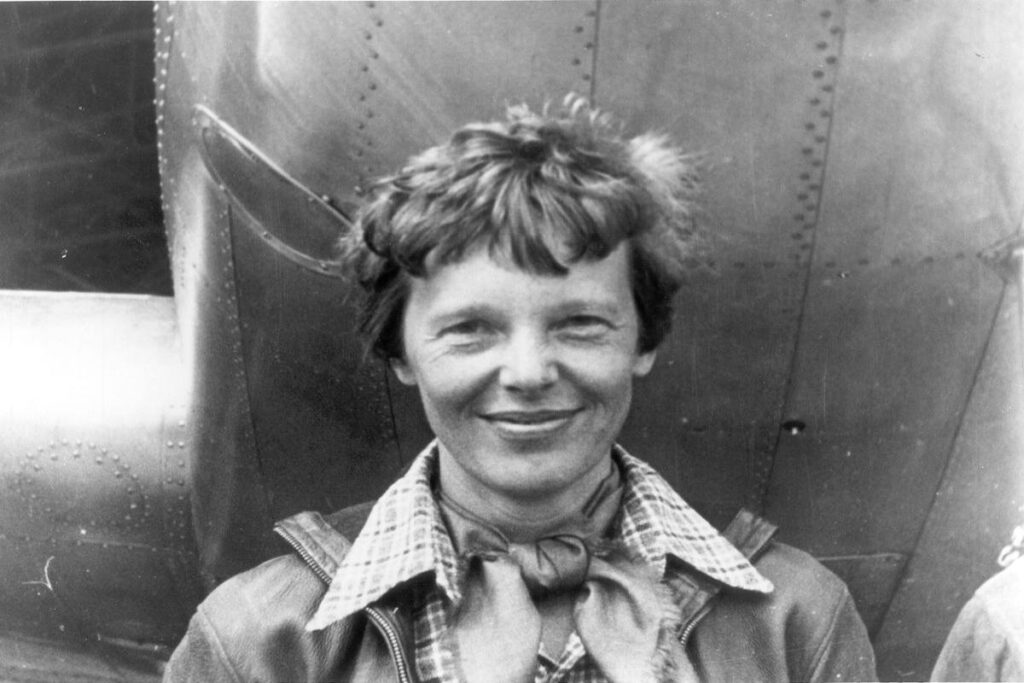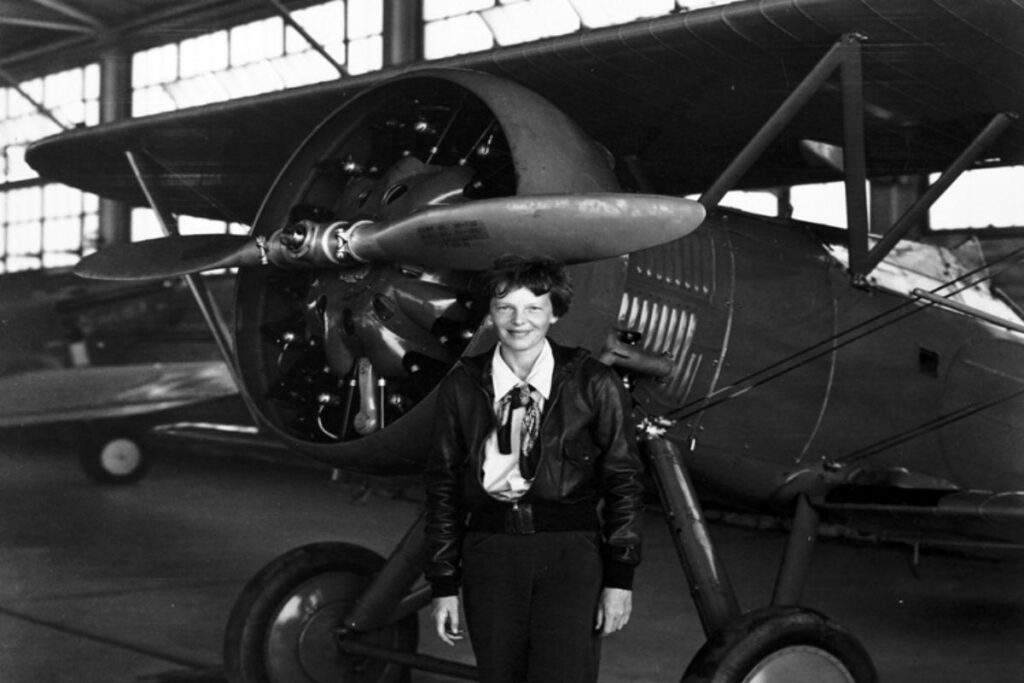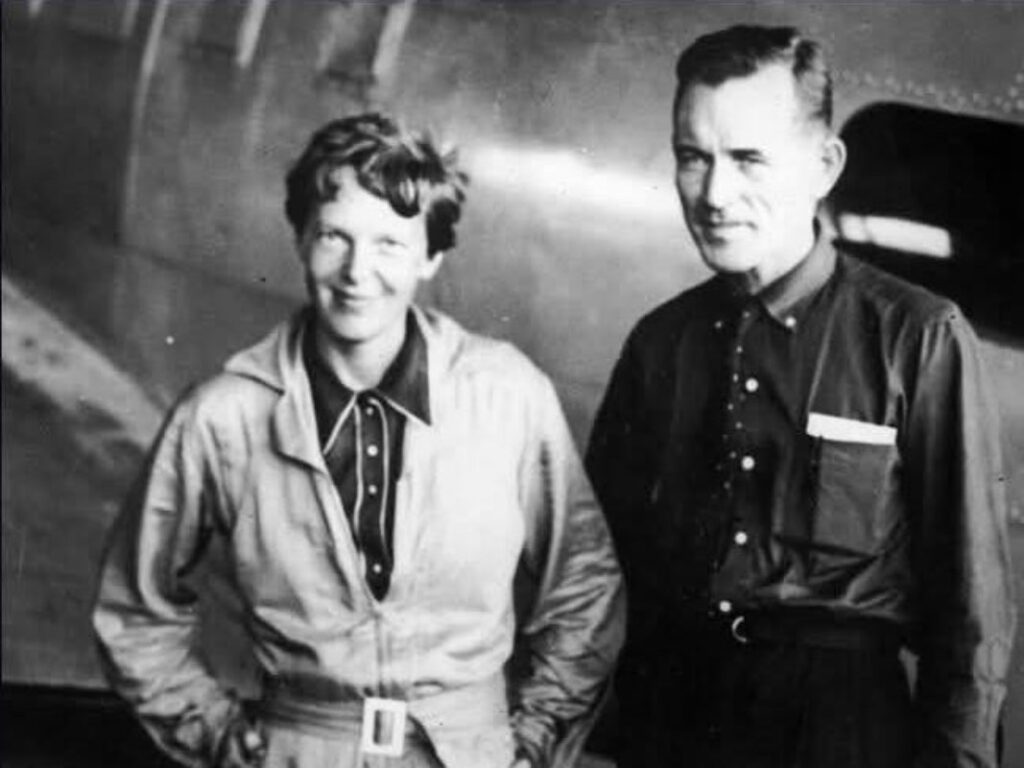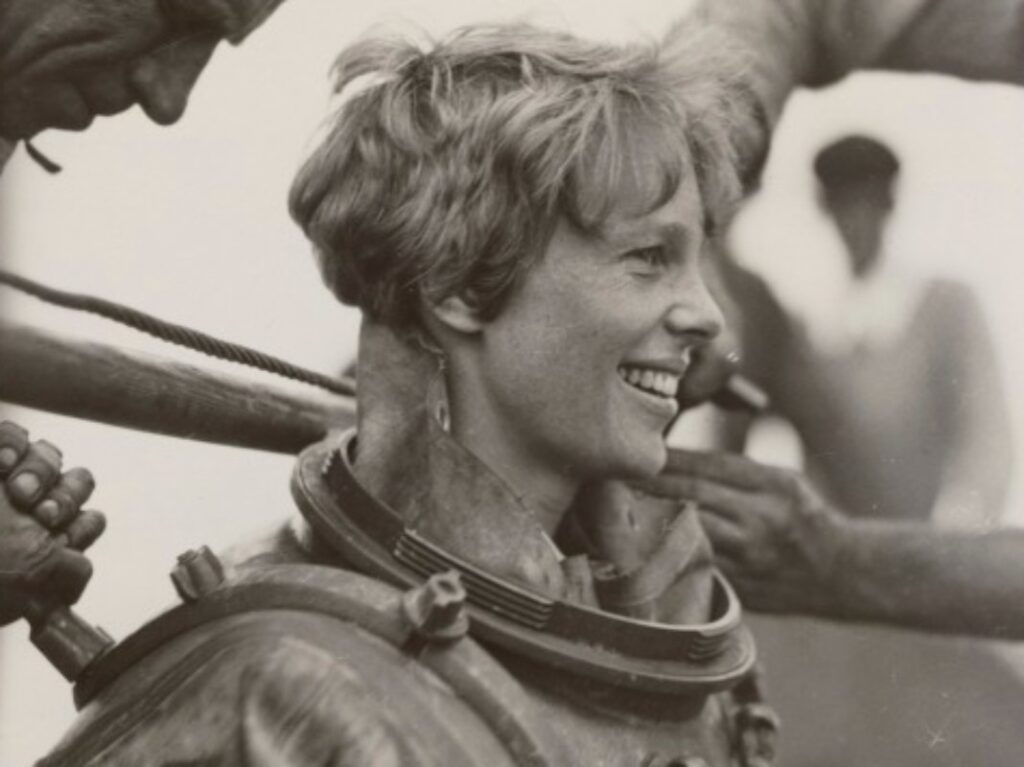Amelia Earhart is still missing!
Close to a century later, there’s still no trace of the legendary pilot and her colleague after they went on a brave adventure and never returned. The Amelia Earhart disappearance remains one of the most mysterious aviation stories in history.
It all began in the summer of 1937. At the time, humans had just discovered how to fly. Planes were spending hours in the sky, and America was overwhelmed with excitement.
To further advance the new finding, brave pilots would need to put their lives on the line. Thankfully, a few heeded the call. One of them was Amelia Mary Earhart.
The 39-year-old Kansas-born pilot was not afraid to test the waters. In no time, she became the first woman to fly solo across the Atlantic Ocean.
They had only 7,000 miles left to further cement her place as one of the most successful women in aviation history.
Not only that, but she also completed the trip in a record 14 hours and 56 minutes. Yet she was hungry for more. Earhart aspired to become the first woman to fly around the world. It was the most significant challenge she would ever face as a pilot. But she wasn’t perturbed.
Earhart wasn’t shaky when she climbed into her twin-engine Lockheed Electra on July 2, 1937. She was one flight away from making history again. Unfortunately, it was her last.

Days later, America would be thrown into mourning. She and her navigator, Fred Noonan, disappeared over the boundless Pacific Ocean. They left in their wake a desperate and tireless search, a troubled nation, and close to a century of unanswered questions.
But what made this flight so tragic?
The Final Flight Begins
Earhart’s adventure wasn’t careless. She made the best arrangements to match the test of human endurance and navigational skills that the journey would pose. She flew in the most capable aircraft at the time: the Lockheed Electra 10E and modified it to suit the trip.
The plane had reliable communication equipment, additional fuel tanks, and sufficient space for maps, charts, and supplies. It had virtually everything the journey required.
Her most crucial support came from her navigator, Fred Noonan, who was a veteran of both the sea and the sky. His presence was a source of huge assurance for Earhart.
Interestingly, she had attempted the journey some months before. Her March 1937 attempt failed after her plane crashed during takeoff in Hawaii.
She tried again on May 20 of the same year. This time, she ventured towards the East. She and her partner journeyed from the United States, going past South America, Africa, India, and Australia.
They completed 31 of the 34 legs of the journey. That was about 22,000 miles. They had only 7,000 miles left to further cement her place as one of the most successful women in aviation history.
But the next legs were the most challenging. They involved a dreadful flight over the vast Pacific Ocean. It was already the end of June.
Lae to Howland Island: The Most Dangerous Leg
On July 2, 1937, Earhart and Noonan continued their flight. They set off from Lae in New Guinea and headed for Howland Island, a tiny United States territory in the middle of the Pacific.
Finding this minute island was the biggest test of this lap. It was only 2.5 miles long and 0.5 miles wide. It was a dot in the middle of the ocean.

But landing on the island was crucial to the journey. To guide them properly, the U.S. Coast Guard cutter Itasca was already waiting at the location with an advanced communication system in place.
The last words from Earhart came at 7:42 a.m. and 8:43 a.m. “We must be on you but cannot see you… Gas is running low,” was the first message.
But first, Earhart and Noonan must get their directions right. They only had help from compass headings, dead reckoning, and following celestial bodies.
These were not as effective on the Pacific, where there were no landmarks to guide them. It was just miles and miles of deep blue water. A little misstep would throw them off course.
The Last Radio Transmissions
As they approached the area where they believed Howland Island should be, they were to receive communication from Itasca. But speaking with the Coast Guard became problematic.
Although the Itasca could hear from Earhart, she and Noonan couldn’t receive sound from the island. It was a painful ordeal on both ends.
The last words from Earhart came at 7:42 a.m. and 8:43 a.m. “We must be on you but cannot see you… Gas is running low,” was the first message.
“We are on the line 157-337… We will repeat this message on 6210 kilocycles. We are running north and south.” Her voice was never heard after this.
Despite other desperate attempts by the Itasca to signal their location, Earhart was nowhere to be found. A blast from the ship’s whistle and the firing of its boilers to release smoke signals never yielded fruit.
The Search Effort
The disappearance of the Howland Island crew shocked the nation. But frantic and extensive measures were taken to find the pair.
Authorities dispatched several aircraft and vessels from the U.S. Navy and Coast Guard, along with thousands of personnel. They moved everywhere they could in the Pacific in search of Earhart and Noonan.

It was reported that they covered more than 250,000 square miles of water in search of any sign of the lost pilot Amelia Earhart. They looked out for any airplane parts or life rafts.
The theory suggests that the pair headed southward along the 157-337 line, which they reported as their last known location.
After weeks of searching, they came up empty-handed.
The U.S. government gave up looking for Earhart and Noonan. On July 19, 1937, they released an official statement declaring them lost at sea. The official conclusion was that their Lockheed plane had run out of fuel and crashed into the ocean.
But the explanation didn’t satisfy the public. Many people continued to wonder what else could have happened. This was the beginning of the 1937 Pacific flight mystery, one of the most puzzling aviation cold cases in history.
Prevailing Theories
The unsuccessful search for Amelia Earhart gave rise to numerous theories about her disappearance. These explanations emerged and gained popularity as the decades passed.
Here are four of the most convincing ones:
1. Crash-and-Sink
This was the government’s conclusion. Amelia Earhart circled the Pacific in search of Howland Island. Then, her plane began to run out of fuel. In that case, the best option was for her to drop the aircraft in the ocean and swim to safety. But it wasn’t that simple.
The Pacific Ocean around Howland Island was terrifyingly deep. It was 17,000 feet of massive water. Such a large amount of water could easily conceal wreckage from a search team.
2. Gardner Island (Nikumaroro) Hypothesis
Some researchers believe that Earhart and Noonan could have landed on Gardner Island. The island is just 350 miles away from Howland.
The theory suggests that the pair headed southward along the 157-337 line, which they reported as their last known location. They then landed on the island’s coral reef.

Less than 10 years after the Amelia Earhart search, explorers visited the island, now known as Nikumaroro. They discovered some curious items, including possible aircraft parts, human bones, and a woman’s shoe.
However, there has been no substantial proof that any of these items is linked to Earhart, Noonan, or the Lockheed airplane.
Amelia Earhart is proof that there is no limit to human greatness. We can accomplish anything we put our minds to.
3. Japanese Capture Theory
Perhaps the most dramatic of the Amelia Earhart theories is that the Japanese detained her. The story states that the pilot and her flight partner navigated their way to the Marshall Islands, which was then a Japanese territory.
Given the frosty relationship between the United States and Japan at the time, they were likely seen as enemies or spies. They could have been tortured and executed or imprisoned afterward.
Again, this theory hasn’t been proven. No solid proof has traced the pair to the Japanese authorities.
4. New Britain Crash
Another theory states that Earhart could have returned to New Guinea. She could have dropped her plane in the jungles of Papua New Guinea’s Britain Island.

Residents of the island stumbled upon some aircraft wreckage that looked like the Lockheed Electra. But further probes haven’t found any links.
Amelia Earhart’s Legacy
At the center of one of the most notable historical aviation accidents is one of the most iconic aviation legends. Amelia Earhart made the most of the limited time she had to leave a lasting impact on the world.
She showed generations of people the road to greatness. Earhart is an inspiration to the aviation industry and a major influence in the fight for women’s rights.
Amelia Earhart is proof that there is no limit to human greatness. We can accomplish anything we put our minds to.
Although many decades have passed, Amelia Earhart’s legacy is unforgettable. To date, there are efforts to make sense of her disappearance. Curious minds have deployed modern search tools to find out what befell her flight.
We will never lose hope. One day, we could solve the puzzle of aviation’s most mysterious accidents.
But which of the Amelia Earhart theories sounds the most convincing to you?

